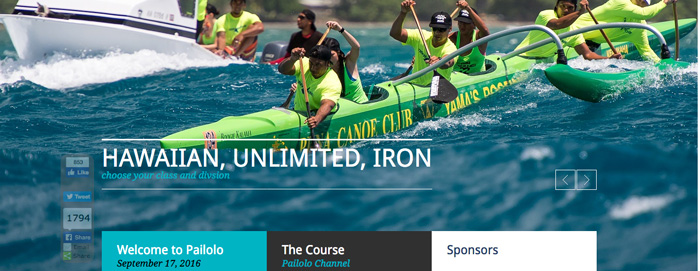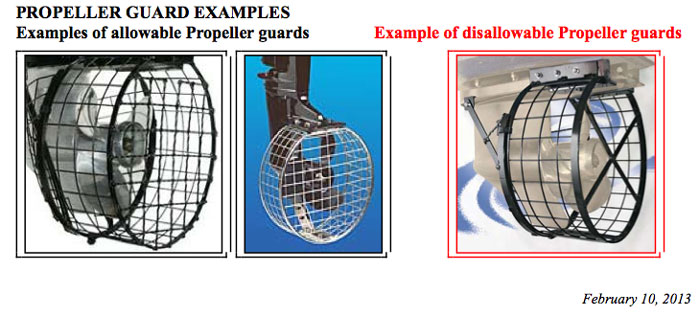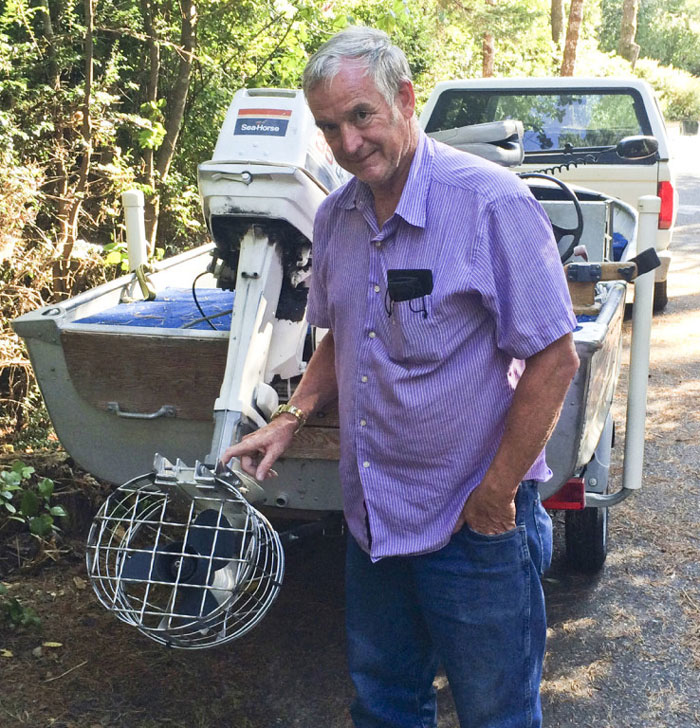Hawaii boat propeller accident rekindles call for propeller guards
Faith’s accident comes on the heels of the stalling of a proposal to require propeller guards. The proposal was named House Bill 2024.
House Bill 2024 was put forth in the wake of the Sri Shim propeller fatality, in which his stepson, Trey Albrecht, was also injured by the propeller.
While Hawaii press is reporting House Bill 2024 stalled, it actually passed but was amended to take effect in 2088, another example of politicians in action.
In addition to the Faith Kalei-Imaizumi accident, Sri Shim and Trey Albrecht accident, Luke Evslin was injured by a canoe race escort boat propeller in October 2010. Luke is currently speaking out for the use of propeller guards.
Our Comments
We previously commented the problems that would be encountered by House Bill 2024 in the “Our Thoughts on the Propeller Guard Proposal” section of an earlier post. Little has changed since then, except our prediction was proven true. The same will happen again if the proposal is broad.
If the proposal is limited to escort boats when people may the in the water (canoe races, sailboat races, open water swim races, etc.) and “propeller guard” is very well defined it might have a chance.
For example, one definition of an acceptable propeller guard might be: fully surrounds the propeller, provides protection to the front, side, and to the rear, largest round plug that can pass though the mesh is “x” inches in diameter, rear screens that flip up when underway forward to reduce drag are acceptable. This proposal is limited to boats with top speeds not in excess of “y” mph (if boat goes faster, it cannot be an escort boat). See examples below.
Please note- I am not saying we agree with the examples provided above, I am just saying a strip of photos like that needs to be provided to help define what you call acceptable.
With Faith Kalei-Imaizumi being backed into, you need protection to the rear. With most folks just being ran over, you need protection to the front. A full cage guard seems like the logical option. They work great below 10 mph. As you begin to increase speeds from there at some point you will encounter significant drag, limiting the maximum speed of the boat, and may encounter boat handling issues. That is why MariTech sells their more open version (marked disallowed in image above) to rescue boats.
If you want to see what someone else tried, see Propeller Guards Required by U.S. Masters Swimming Open Water events. They started requiring them on their escort boats for a while, then backed off the requirement. Now in 2016 they require the use of propeller guards OR an onboard swimmer monitor, someone looking for swimmers besides the boat operator. See pages 7 and 8.
Masters Swimming escort boats are typically pretty small, as seen in this Oregon example below from their link, Safety Boat and Prop Guard.
I have no official comments of why U.S. Masters Swimming backed off the mandatory use of guards, but speculate it was cost and hassle. Their escort boats belong to volunteers who are donating their time, their boat, and their gas. When you ask them to come up with a propeller guard and install it, that is quite a bit to be asking of a volunteer. Plus they might be taking the guard off for normal use and only installing it for the swimming meets. I speculate canoe race escorts boats are likely supplied by volunteers as well.
One place we have seen “almost mandatory” guards succeed and thrive is Australian Youth Sailing Clubs. The clubs almost universally use them on their escort boats /training boats /coaching boats. Several other youth organizations there do as well. See this 2013 Safety Information Notice from Yachting Australia. Similarly, guard are heavily used by Surf Life Saving Australia (SLSA) boats. Both groups tend to use smaller boats, the life saving guys and gals use RIBs.
Issues Particular to Outrigger Canoe Escort Boats
Escort boats are used to provide safety assistance, communication, tows when needed, and to keep providing fresh crew members to the canoe (exchange part of the crew at a time).
Instruction for 2012 Palilolo Challenge
“It is recommended that escort boat operators, coaches, paddlers and boat crew members discuss the details of conducting a water change safely. It is recommended that when making a water change, the escort boat drop off changing paddlers at a safe distance in front of the canoe, making sure that the boat is in neutral before paddlers leave escort boat. The escort boat should maintain a safe distance until the change of crew in the canoe is complete. The persons on the escort boat should have the paddlers in the water in their sight at all times. When retrieving the paddlers in the water after the change, the boat must be in neutral when close to paddlers and stay in neutral until all paddlers are all on board of escort boat.”
Note the instructions above were for 2012. We see no detailed discussion of how to pass the crew over in the 2016 instructions. While we have no experience in dropping off or picking up canoe crews in ocean water, leaving the boat in neutral while swimmers are boarding the escort boat (probably from the stern) is not consistent with typical boating safety instructions.
Some training of crews in exactly how best to perform these exchanges and taking extra efforts to make those in the water extremely visible might help as well.



